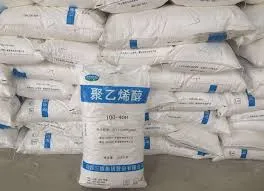Hydroxypropyl Methylcellulose (HPMC) An Overview
Hydroxypropyl Methylcellulose (HPMC) is a versatile and widely used cellulose derivative that has gained significant attention in various domains, including pharmaceuticals, food technology, construction, and personal care products. As a semi-synthetic polymer, HPMC combines properties of natural cellulose with superior functional capabilities, making it an essential ingredient in many applications.
Chemical Structure and Properties
HPMC is produced by the etherification of cellulose, which involves substituting hydroxyl groups in the cellulose backbone with hydroxypropyl and methyl groups. This modification results in a compound that retains the structural integrity of cellulose while providing enhanced solubility in water and organic solvents. The degree of substitution (DS) of hydroxypropyl and methyl groups can be manipulated during synthesis, resulting in a range of HPMC types with varying properties, such as viscosity, thermal stability, and gel formation.
One of the key characteristics of HPMC is its ability to form thick viscous solutions. When dissolved in water, HPMC exhibits pseudoplastic behavior, meaning that its viscosity decreases under shear stress, making it easier to handle in various formulations. Additionally, HPMC is non-toxic, biodegradable, and compatible with a wide range of other excipients and ingredients, making it a preferred choice in many industries.
Applications in Pharmaceuticals
In the pharmaceutical industry, HPMC serves multiple roles, particularly as a binder, thickening agent, and film-forming agent in drug formulations. It is commonly used in tablet formulations to improve the flow properties of powders, enhance the tablet's mechanical strength, and control the release of active pharmaceutical ingredients (APIs). By adjusting the concentration and type of HPMC, formulators can create sustained-release profiles or immediate-release formulations tailored to specific therapeutic needs.
HPMC is also widely used in the production of ophthalmic solutions and contact lens formulations. Its gel-forming properties contribute to prolonged retention of drugs on the eye surface, enhancing therapeutic efficacy. Furthermore, HPMC-based films are utilized for coating tablets and capsules, providing a barrier to moisture and improving the stability of sensitive APIs.
Role in Food Technology
hydroxypropyl methyl cellulose (hpmc)

In food technology, HPMC is valued for its thickening, stabilizing, and emulsifying properties. It is often employed in gluten-free baking formulations, acting as a substitute for gluten to improve dough elasticity and texture. HPMC helps maintain moisture retention in baked goods, extending shelf life while providing a desirable mouthfeel.
Moreover, HPMC is used in sauces, dressings, and desserts as a thickener and stabilizer. Its ability to form gels allows for the creation of smooth textures and prevents separation, thus enhancing the overall quality of food products. As a food additive, HPMC is recognized as safe for consumption, which has led to its inclusion in various processed food products.
Construction Applications
In the construction industry, HPMC is utilized as an additive in cement-based products, including mortars, plasters, and adhesives. Its incorporation improves workability, water retention, and adhesion properties, making it particularly useful in tiling applications. The water-retaining properties of HPMC prevent rapid evaporation during the curing process, allowing for optimal hydration and enhancing the mechanical strength of the finished product.
Personal Care Products
HPMC is also a popular ingredient in personal care products, such as lotions, creams, and shampoos. Its thickening and emulsifying properties enhance the stability and texture of formulations, ensuring a pleasant application experience. Furthermore, HPMC contributes to the viscosity and spreadability of products, which are crucial factors in consumer satisfaction.
Conclusion
Hydroxypropyl Methylcellulose is a multifunctional compound that plays a vital role in various industries, from pharmaceuticals to food technology, construction, and personal care. Its unique properties, including water retention, gel formation, and viscosity control, make it an indispensable ingredient in many products. As research continues to explore new applications and functionalities, HPMC is expected to remain a key player in advancing formulation science and product development across diverse sectors. Its versatility, safety, and effectiveness position HPMC as an essential component in meeting the evolving demands of modern consumers.
-
Rdp Powder: Key Considerations for Wholesalers in the Building Materials IndustryNewsJul.08,2025
-
Key Considerations for Wholesalers: Navigating the World of Hpmc - Based ProductsNewsJul.08,2025
-
Hpmc Detergent: Key Considerations for WholesalersNewsJul.08,2025
-
Key Considerations for Wholesalers: China Hpmc For Tile Adhesive, Coating Additives, Concrete Additives, and MoreNewsJul.08,2025
-
Crucial Considerations for Wholesalers: Navigating the World of Construction MaterialsNewsJul.08,2025
-
Key Considerations for Wholesalers Sourcing Additive For Cement, Additive For Concrete, Additive For Putty from Additive Manufacturer Shijiazhuang Gaocheng District Yongfeng Cellulose Co., Ltd.NewsJul.08,2025




